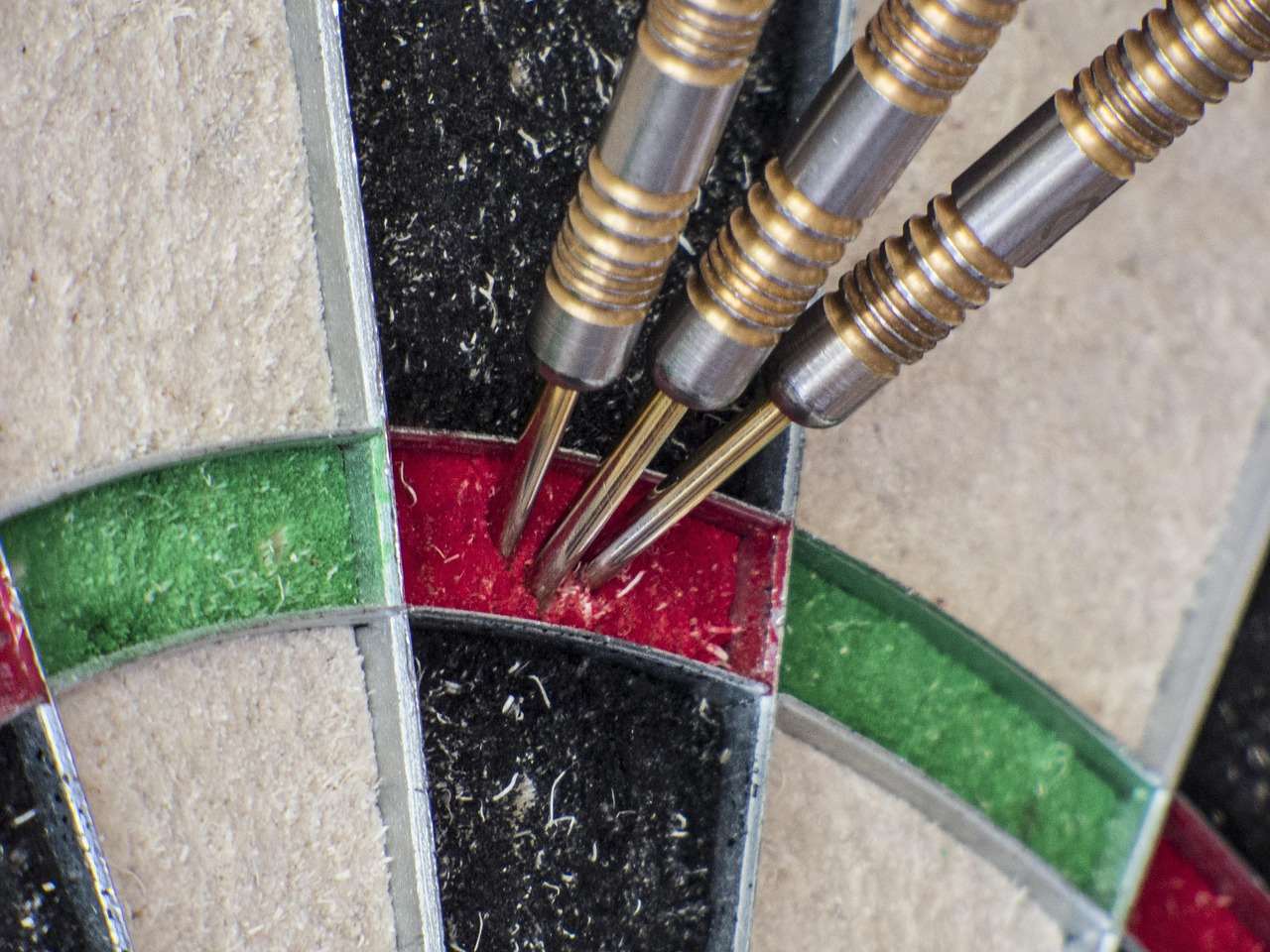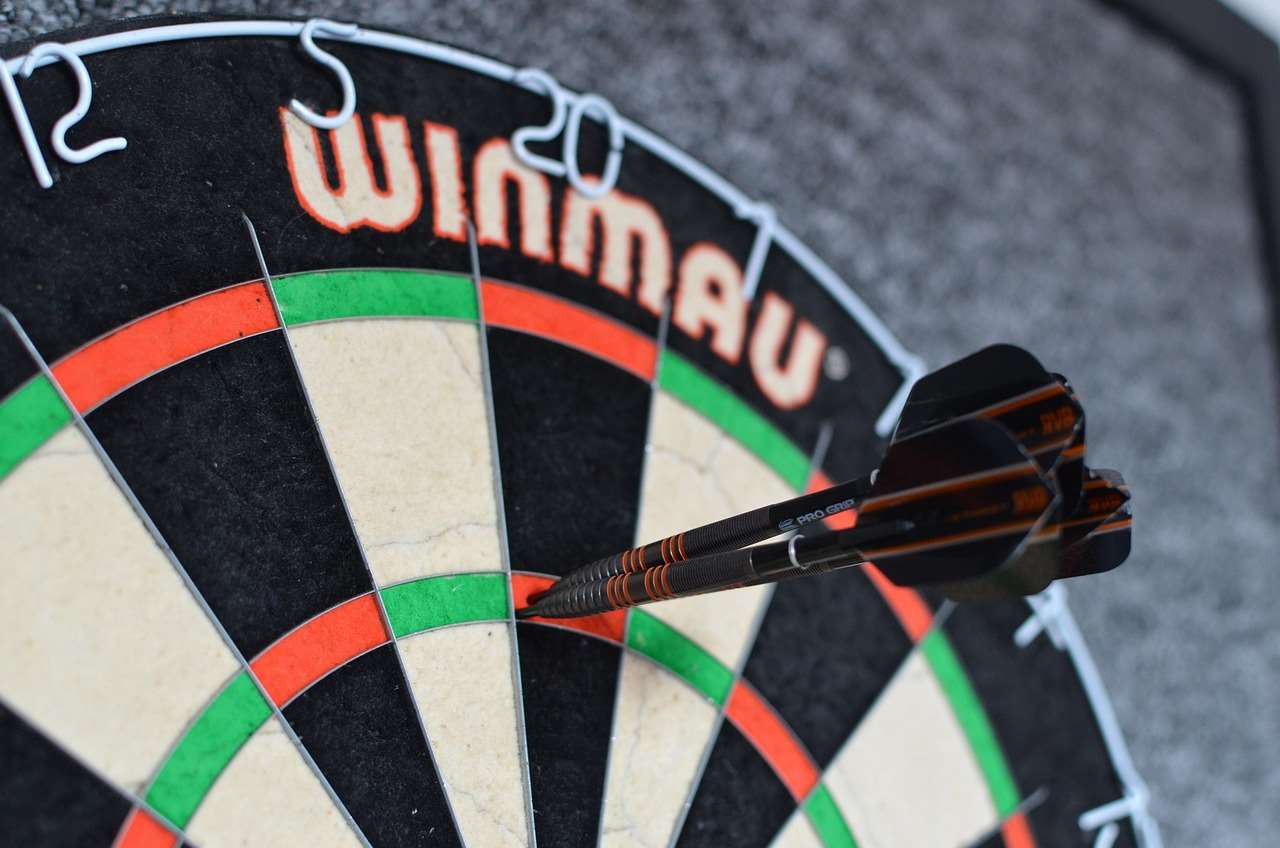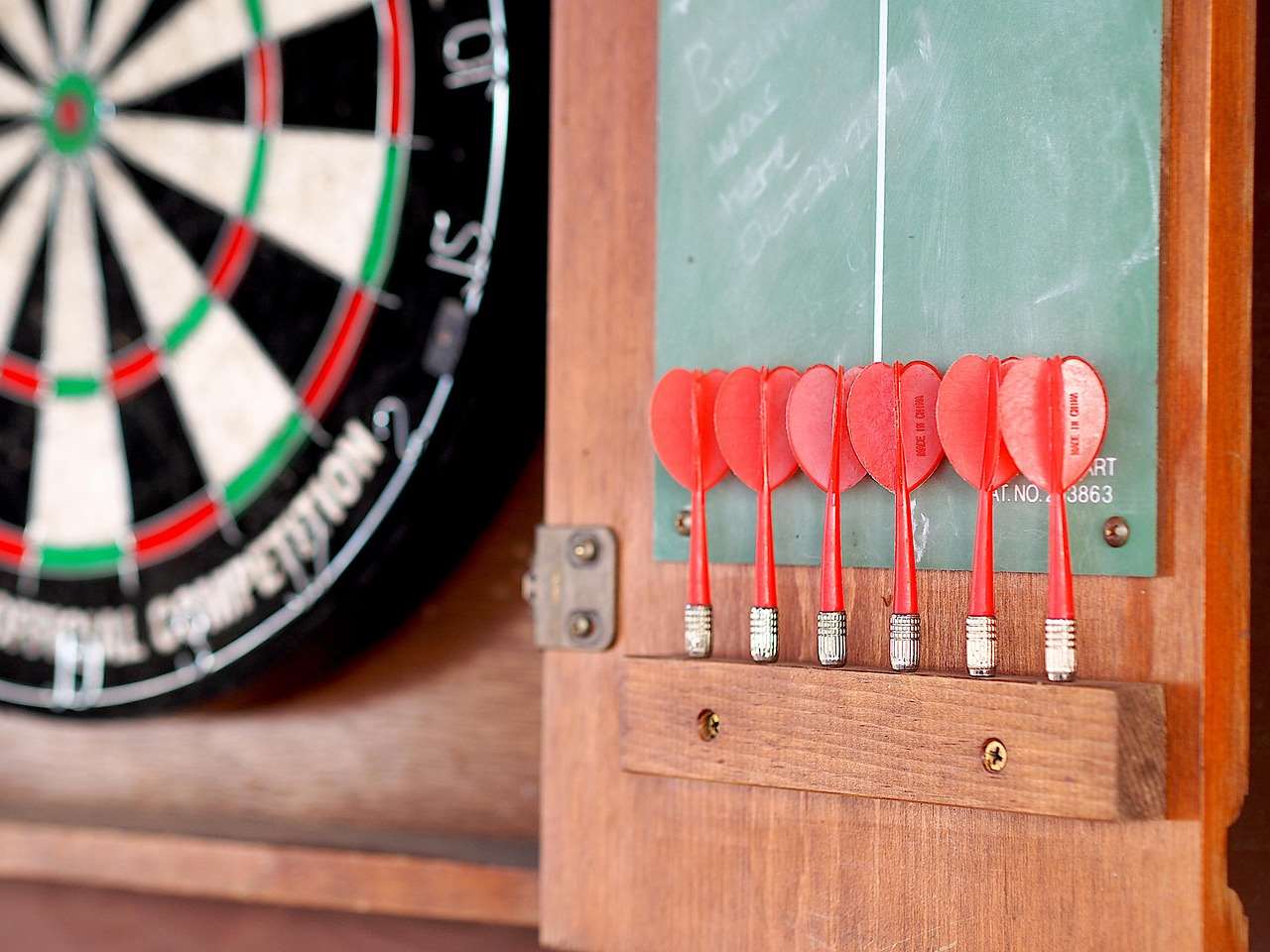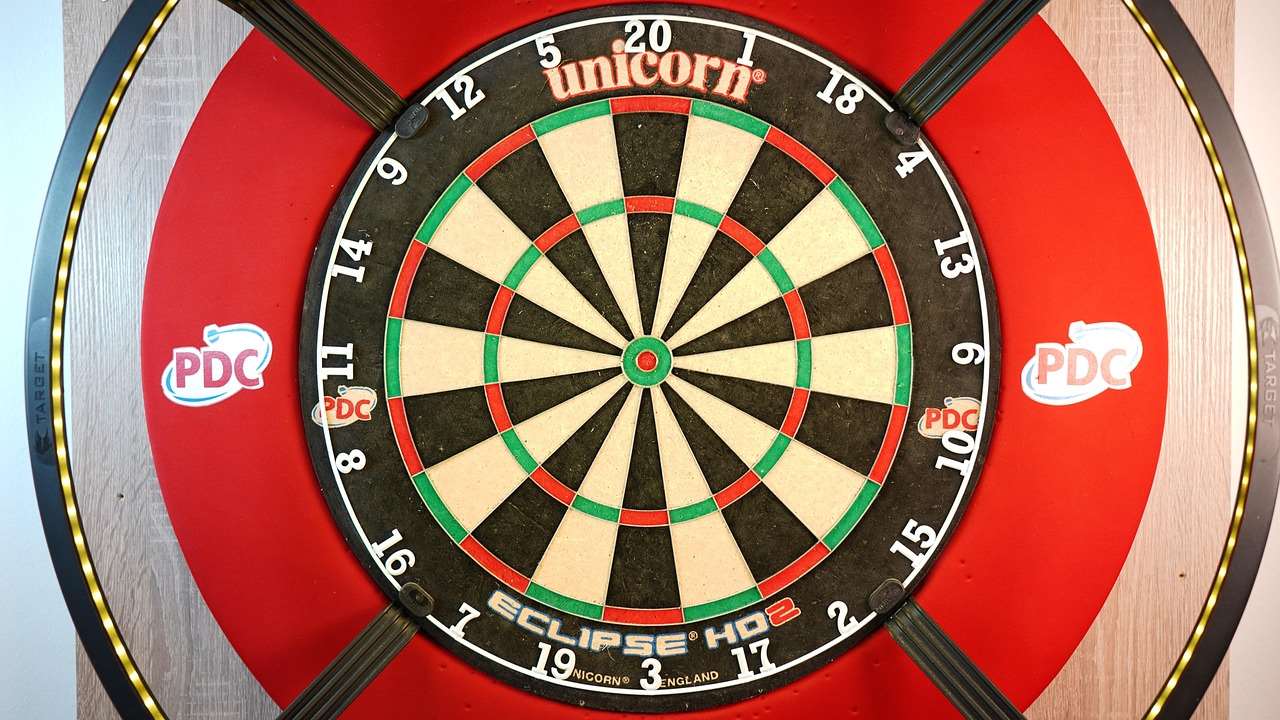Understanding Darts Betting Market Volatility is crucial for maximizing profits and minimizing risks; this article provides a comprehensive guide on identifying the factors that influence price fluctuations in darts betting and offers strategies for navigating them successfully. We’ll explore everything from player form and head-to-head records to tournament formats and psychological pressures that contribute to the dynamic nature of darts betting odds.
⚠️ Still Using Pen & Paper (or a Chalkboard)?! ⚠️
Step into the future! The Dart Counter App handles all the scoring, suggests checkouts, and tracks your stats automatically. It's easier than you think!
Try the Smart Dart Counter App FREE!Ready for an upgrade? Click above!
Understanding Darts Betting Market Volatility
Darts Betting Market Volatility stems from the inherent unpredictability of the sport and the various factors that can influence a player’s performance on any given day. Unlike some other sports with more predictable outcomes, darts can be significantly affected by individual player psychology, momentary lapses in concentration, and even external factors like crowd noise.
Several elements contribute to the changing odds you see across different bookmakers. These can be broadly classified into player-related factors, event-related factors, and market-related factors.

Player-Related Factors
The most significant driver of darts betting market volatility comes from the players themselves. Consider these crucial aspects:
- Current Form: A player’s recent performance is a primary indicator. A string of strong performances will generally shorten their odds, while a series of losses will lengthen them.
- Head-to-Head Record: The historical record between two opponents can significantly influence betting odds. A player with a dominant record against a particular opponent is likely to be favored.
- Player Health and Fitness: Injuries or illness can dramatically impact a player’s performance. Any news about a player’s physical condition can lead to rapid shifts in the odds.
- Psychological State: Darts is a mental game, and a player’s confidence and composure are crucial. Factors like personal issues, pressure from sponsors, or even a bad night’s sleep can affect their mental state and, consequently, their performance.
- Playing Style and Matchups: Some players thrive against certain playing styles but struggle against others. Understanding these nuances can give you an edge.
For example, if a usually consistent player like Michael van Gerwen has a few uncharacteristic losses in a row, this is a clear sign of potential volatility in his upcoming matches. Keep a close eye on player interviews and pre-match reports. You can learn more about player sponsorships at Impact Betting Sponsorship Darts

Event-Related Factors
The specifics of a darts tournament or match can also introduce volatility into the betting market:
- Tournament Format: The length of matches and the specific rules of a tournament can favor certain players. For example, longer matches tend to reward consistency and stamina.
- Venue and Crowd: The atmosphere of the venue and the size and behavior of the crowd can significantly affect players. Some players thrive under pressure, while others crumble.
- Stage Presence: A player’s ability to perform on a big stage with thousands of people watching can impact performance.
- Importance of the Match: Matches with higher stakes, such as major tournament finals, tend to be more unpredictable due to the increased pressure on the players.
- Unexpected Events: Unforeseen circumstances like power outages, interruptions from the crowd, or even equipment malfunctions can introduce chaos and volatility.
Strategies for Navigating Darts Betting Market Volatility
While Darts Betting Market Volatility can be challenging, it also presents opportunities for savvy bettors. Here are some strategies to help you navigate the fluctuations and potentially profit:
1. Do Your Research
Thorough research is paramount. Don’t rely solely on the initial odds. Delve deeper into player statistics, recent form, head-to-head records, and any news that might affect their performance. Utilize reliable sources of information such as darting news websites, player interviews, and statistical databases. Consider exploring different sources to get a balanced perspective.

2. Monitor Odds Movements Closely
Pay attention to how the odds are changing in the lead-up to a match. Significant and rapid shifts in odds can indicate new information or changing sentiment in the market. Monitor multiple bookmakers to identify discrepancies and potential value bets. Consider using odds comparison websites to streamline this process.
3. Understand Market Sentiment
Try to gauge the overall sentiment of the betting market. Are most people backing a particular player? Is there a strong consensus among tipsters? Understanding the prevailing sentiment can help you identify potential overreactions and opportunities to bet against the grain. However, be careful not to blindly follow the crowd; always base your decisions on your own research and analysis.
4. Consider Live Betting
Live betting, also known as in-play betting, allows you to place bets during a match. This can be particularly useful in darts, where momentum can shift quickly. By watching the match unfold, you can assess players’ performance, body language, and reactions to pressure in real-time. This can provide valuable insights that are not available before the match and help you make more informed betting decisions. Just remember to consider the Betting Sponsorship Impact On Darts.
5. Use a Staking Plan
A staking plan is crucial for managing your bankroll and mitigating the risks associated with volatility. Avoid chasing losses and stick to your predetermined betting limits. Consider using a proportional staking plan, where your stake is a fixed percentage of your bankroll. This helps to ensure that your bets are appropriately sized relative to your overall financial resources. Remember that disciplined bankroll management is essential for long-term success in darts betting.

6. Exploit Value Bets
A value bet is a bet where you believe the odds offered by the bookmaker are higher than the actual probability of the event occurring. Identifying value bets requires a keen eye for detail, a deep understanding of the sport, and the ability to assess probabilities accurately. Look for situations where the market has overreacted to recent events or where the odds do not fully reflect a player’s true potential. You can explore the topic of Darts Betting And Fantasy Leagues Guide to broaden your knowledge.
7. Specialization
Focus on a specific area of darts betting. For instance, you might specialize in betting on individual legs, 180s, or checkout percentages. By focusing on a niche area, you can develop a deeper understanding of the relevant factors and potentially gain an edge over the general betting market. This focused approach can help you to identify value bets more effectively and reduce the impact of market volatility.
8. Diversify Your Bets
Don’t put all your eggs in one basket. Diversify your bets across multiple matches and different types of bets. This will help to reduce your overall risk and smooth out the fluctuations in your betting results. Consider spreading your bets across different tournaments and leagues to further diversify your portfolio.
The Role of Bookmakers in Darts Betting Market Volatility
Bookmakers play a significant role in shaping darts betting market volatility. They use sophisticated algorithms and trading strategies to set and adjust odds, taking into account a wide range of factors, including player form, public betting patterns, and news reports. Bookmakers also manage their risk by adjusting odds to balance their liabilities.
The actions of bookmakers can create artificial volatility in the market. For example, if a large number of bettors place wagers on a particular player, the bookmaker may shorten the odds to reduce their exposure. This can create a feedback loop, where the shortening odds attract even more bets, further amplifying the volatility. Understanding how bookmakers operate can help you to anticipate market movements and make more informed betting decisions.

Understanding Overrounds
Bookmakers build a profit margin into their odds, known as the overround. This means that the implied probabilities of all possible outcomes in a match add up to more than 100%. The higher the overround, the lower the value for bettors. Be aware of the overround when assessing the value of a bet and compare overrounds across different bookmakers.
Conclusion
Darts Betting Market Volatility is an intrinsic part of the sport, driven by various factors ranging from player form and psychological state to event-specific conditions and bookmaker behavior. By understanding the causes of volatility and implementing effective strategies like thorough research, odds monitoring, and disciplined bankroll management, you can navigate the fluctuations successfully and potentially profit from your darts betting activities.
Remember that there are multiple factors impacting betting companies, one of which is Betting Company Logos Darts Boards. The key takeaway is to approach darts betting with a strategic mindset and be prepared to adapt to the ever-changing dynamics of the market. Stay informed, stay disciplined, and good luck! Now, take what you’ve learned and start analyzing the odds for upcoming darts tournaments.
Hi, I’m Dieter, and I created Dartcounter (Dartcounterapp.com). My motivation wasn’t being a darts expert – quite the opposite! When I first started playing, I loved the game but found keeping accurate scores and tracking stats difficult and distracting.
I figured I couldn’t be the only one struggling with this. So, I decided to build a solution: an easy-to-use application that everyone, no matter their experience level, could use to manage scoring effortlessly.
My goal for Dartcounter was simple: let the app handle the numbers – the scoring, the averages, the stats, even checkout suggestions – so players could focus purely on their throw and enjoying the game. It began as a way to solve my own beginner’s problem, and I’m thrilled it has grown into a helpful tool for the wider darts community.